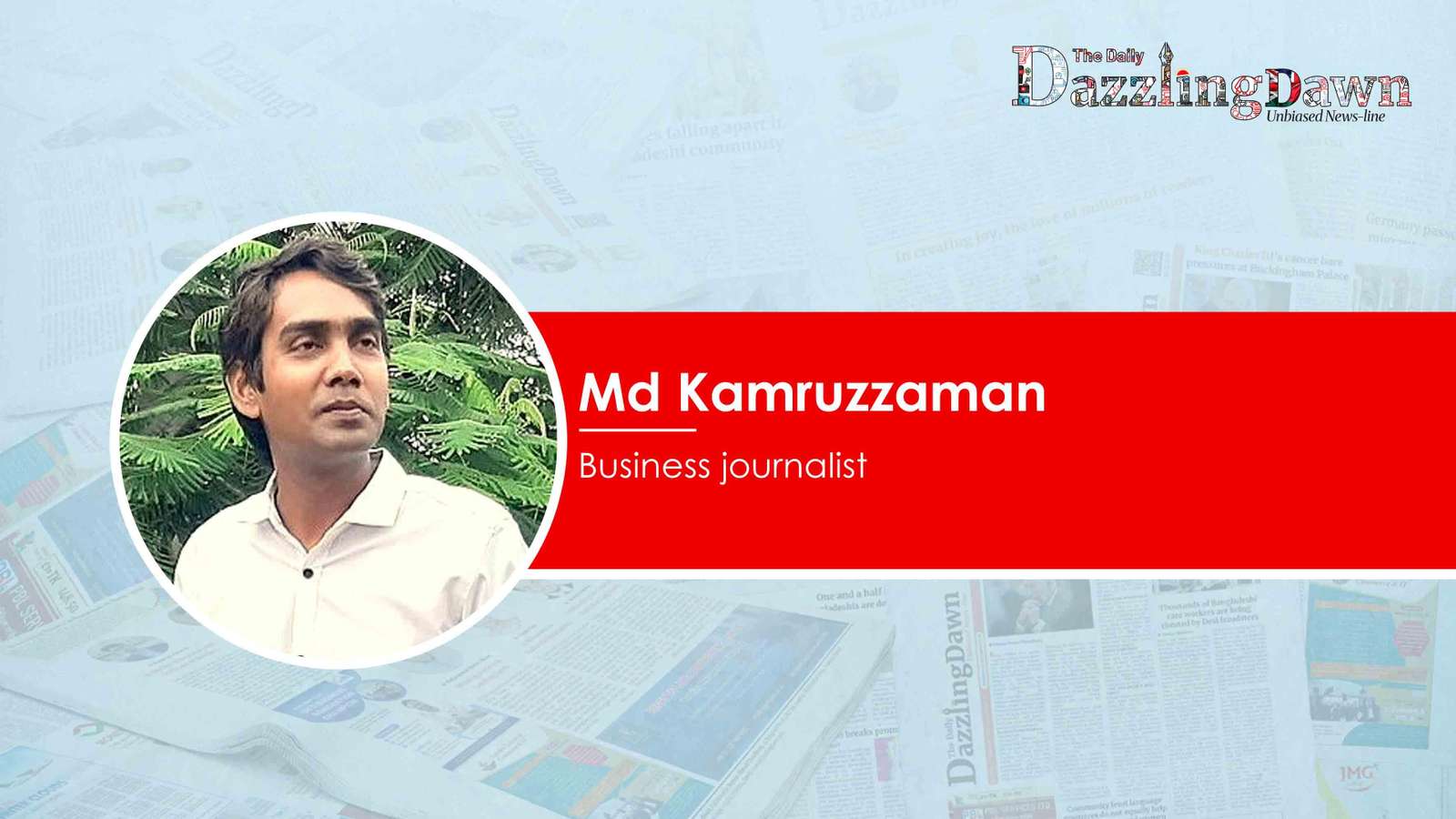As Bangladesh unveils its Tk7.90 lakh crore national budget for FY2025–26, the headlines brim with big numbers, cautious optimism, and the air of continuity. Yet beneath the reassuring tone lies a missed opportunity for transformation. Is this budget simply fulfilling routine fiscal obligations, or has it failed to confront the deeper institutional reforms the country urgently needs?
A Paper of Projections, Not Transformations
The Centre for Policy Dialogue (CPD) observes that while the budget is broadly consistent with macroeconomic projections, it is conservative in ambition and limited in structural vision. Professor Mustafizur Rahman pointed out that recommendations from the Local Government Reform Commission and Labour Reform Commission have once again been bypassed, despite the urgency of their agendas.
One of the most telling absences is the failure to link tax incentives with labour rights compliance, especially in the vital ready-made garments (RMG) sector. Bangladesh’s economic identity is deeply tied to its apparel exports, and yet reforms that could ensure ethical compliance, improve working conditions, and create long-term sustainability were left untouched.
Instead, the budget offers narrow tax exemptions for the employment of third-gender and specially-abled individuals—commendable, but insufficient. These symbolic efforts cannot substitute for system-wide reform, particularly when global buyers increasingly factor social compliance into sourcing decisions.
Former World Bank lead economist Dr Zahid Hussain aptly noted: “Budget implementation isn’t about size; it’s about strategy.” The fiscal framework may appear neat on paper, but the absence of structural momentum makes many of its targets aspirational at best.
Revenue Ambitions vs. Ground Realities
The government projects an 8.9% increase in revenue collection, primarily through the National Board of Revenue (NBR). Yet CPD warns that to meet this goal in real terms, revenue would need to grow by 17–18%, a tall order given current administrative inefficiencies and low tax compliance.
| Indicator | FY25 Revised | FY26 Proposed | Remarks |
| Total Budget | Tk7.44 lakh cr | Tk7.90 lakh cr +3.8% | growth |
| NBR Revenue | Tk4.63 lakh cr | Tk4.99 lakh cr 8.9% | projected rise |
| Budget Deficit | 4.1% of GDP | 3.6 % of GDP | Narrowing |
| Remittance Target | 20.0% (FY25) | 8.0% (FY26) | Overly conservative |
| LNG Subsidy | Tk6,000 cr | Tk9,000 cr | Reinforces fossil fuel |
Bangladesh has one of the lowest tax-to-GDP ratios in South Asia, hovering around 8.5%, compared to over 15% in India. Rather than innovating to broaden the base—by formalizing SMEs, leveraging mobile financial services, and incentivizing digital payments—the budget continues to rely on traditional channels and enforcement-heavy approaches.
Climate, Employment, and the Missed Signal
One of the most alarming developments is the increase in LNG subsidies, rising from Tk6,000 crore to Tk9,000 crore. This sharp tilt toward fossil fuels sends a worrying signal at a time when Bangladesh is already vulnerable to climate change and has pledged green transition commitments under the Paris Agreement.
Instead of incentivizing renewable energy and decentralized solar adoption in rural grids, the state appears to be doubling down on import-heavy energy strategies. This not only has long-term environmental costs but also puts pressure on foreign exchange reserves.
In terms of employment, particularly youth employment, the budget is notably silent. Bangladesh has a youth unemployment rate exceeding 10%, and many graduates remain underemployed or leave the country seeking low-skilled jobs. Experts argue that the budget could have used fiscal tools to:
- Incentivize green jobs and digital skills training
- Support labour-intensive industries beyond RMG (e.g., ICT, agro-processing)
- Create tax credits for enterprises that comply with ILO standards
As it stands, labour policy remains underfunded, underprioritized, and under-enforced.
The Digital Economy and Informal Sector Blind Spots
Another major oversight is the absence of a clear roadmap to bring the informal economy into the formal system. Over 85% of Bangladesh’s workforce is informal, and the government has an opportunity to use digital payment systems and mobile banking to gradually incorporate these actors into the tax net and social safety nets.
Countries like Indonesia and Kenya have made remarkable progress by using digital IDs, mobile tax filing, and e-wallet subsidies to formalize informal workers. Bangladesh could learn from these models—but the budget provides no such strategic direction.
For the Global Diaspora: An Echo, not a Leap
For millions of Bangladeshis abroad, especially in the UK, Europe, and the Middle East, the budget’s 8% remittance growth projection appears not only underwhelming but misaligned with ground realities. In FY25 (July–May), remittance surged by 28.7%, largely due to curbs on hundi (informal channels).
Professor Mustafizur Rahman noted that this spike is unlikely to sustain unless complemented by forward-thinking policies. A modern remittance framework would include:
- Diaspora bonds with sovereign guarantees
- Investment platforms for NRBs in housing, SMEs, and fintech
- Lower transaction costs through fintech partnerships
- Integration of NRBs into national policymaking through consultative bodies
Despite their contribution to the economy, Non-Resident Bangladeshis remain excluded from national development planning, and this budget does little to correct that imbalance.
A Budget Caught in Caution
This year’s budget arrives at a crossroads—rising inflation, a strained currency, and dwindling foreign reserves have created a complex economic terrain. But rather than respond with reform, the budget leans on caution, control, and continuity.
By postponing decentralisation, evading labour and tax reform, and underinvesting in climate and youth employment, the government appears more concerned with preserving political capital than preparing for economic resilience.
The fiscal document reads more like an administrative ledger than a visionary blueprint.
The Takeaway: Reform Delayed Is Reform Denied
Bangladesh has shown remarkable resilience—bouncing back from the pandemic, managing global commodity shocks, and keeping growth positive. But resilience is not the same as readiness.
This budget could have been a turning point—a platform to signal serious reform in labour, taxation, local governance, and green energy. It could have been a roadmap to prepare Bangladesh for LDC graduation, build inclusive cities, and enable citizen-led development.
Instead, it chooses the safe route. Without bold structural action now, the cost of inaction will only grow—socially, economically, and environmentally. Reform delayed is reform denied.
The next budget must not simply aim for stability. It must aim for justice, inclusivity, and sustainability. The real task is not just to balance accounts, but to balance aspirations—between growth and equity, between ambition and accountability.
Bangladesh needs more than budgets. It needs a national vision.
________________________________________
Author: Md Kamruzzaman, widely known as Babu Kamruzzaman, is an award-winning business journalist at News24 Television, covering economic governance, development finance, and global policy dialogue. He has reported from multiple IMF and World Bank Annual Meetings, the WTO Ministerial Conference, and contributes regularly to leading international policy platforms.








.svg)

_1.jpg)
_1.jpg)